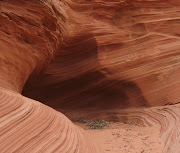 Another science fiction plot turned into reality as a meteor fell from space with a loud heart stopping crash, landing in Carancas, Peru. Like most curious people, Peruvians wanted to see what fell from the heavens unbidden. They got more than they bargained for as those who got too close will attest when not throwing up from the gases emitting from the site. Enter the conspiracy theorists in various stages of intellectual déshabillé. Government sources are claiming no way - no how is it a meteor, experts nowhere near the scene are positing from London that it was a more common fireball. Great balls of fire falling from the sky somehow seems even a wee bit more fantastic.
Another science fiction plot turned into reality as a meteor fell from space with a loud heart stopping crash, landing in Carancas, Peru. Like most curious people, Peruvians wanted to see what fell from the heavens unbidden. They got more than they bargained for as those who got too close will attest when not throwing up from the gases emitting from the site. Enter the conspiracy theorists in various stages of intellectual déshabillé. Government sources are claiming no way - no how is it a meteor, experts nowhere near the scene are positing from London that it was a more common fireball. Great balls of fire falling from the sky somehow seems even a wee bit more fantastic.
"Increasingly we think that people witnessed a fireball, which are not uncommon, went off to investigate and found a lake of sedimentary deposit, which may be full of smelly, methane rich organic matter," said Dr Caroline Smith, a meteorite expert at the London-based Natural History Museum.
"This has been mistaken for a crater."
"That is why we are asking for an analysis, because we are worried for our people. They are afraid," he said.
Another local villager, Romulo Quispe, said people were worried that the water was no longer safe to drink.
"This is the water we use for the animals, and for us, for everyone, and it looks like it is contaminated," he said. (photo from BBC)
On top of it all, the uninvited meteor/former ball of fire stinks to high heaven. Some are calling it a rare meteor, which may be a mite redundant. Peru's researchers and scientists are investigating thoroughly as the water supply is a definitive issue as posted previously. This area in Peru suffers from poisonous deposits of naturally occurring arsenic in its soil already and this further makes procuring clean water a life threatening issue to the locals. The area affected is near Lake Titicaca.
But the illness was the result of inhaling arsenic fumes, according to Luisa Macedo,
a researcher for Peru's Mining, Metallurgy, and Geology Institute (INGEMMET), who visited the crash site.
The meteorite created the gases when the object's hot surface met an underground water supply tainted with arsenic, the scientists said.
Numerous arsenic deposits have been found in the subsoils of southern Peru, explained Modesto Montoya, a nuclear physicist who collaborated with the team. The naturally formed deposits contaminate local drinking water.
"If the meteorite arrives incandescent and at a high temperature because of friction in the atmosphere, hitting water can create a column of steam," added José Ishitsuka, a geologist at the Peruvian Geophysics Institute, who analyzed the object.
The more than two dozen locals who became ill and nauseous are recovering. Peruvian scientists examining the fragments are finding magnetic fragments consistent with prior meteors that crashed into earth. Clean water repositories are important to the locals and the water supply is undergoing vigorous testing. The testing should not be a one time event because of the unexpected meteor, but because the ground soil is rich with arsenic seeping into the water supply is a known carcinogen the world over.

In 1908 a fireball devastated a Siberian forest. Scientists had consensus on the causation but this book poses some interesting questions. From author Surendra Verma, The Mystery of the Tunguska Fireball is a 2006 paperback release.

A local author from the area of Lake Titicaca, Peru writes beautifully about the ancient mystery and history of the highlands and his intimate knowledge of the area. Jorge Luis Delgado is famous as a guide and MaryAnn Male, a lady of doctorate letters, was so taken by his knowledge she urged him to write the story of the area. The excellent collaborative result is Andean Awakening: An Inca Guide to Mystical Peru.










No comments:
Post a Comment